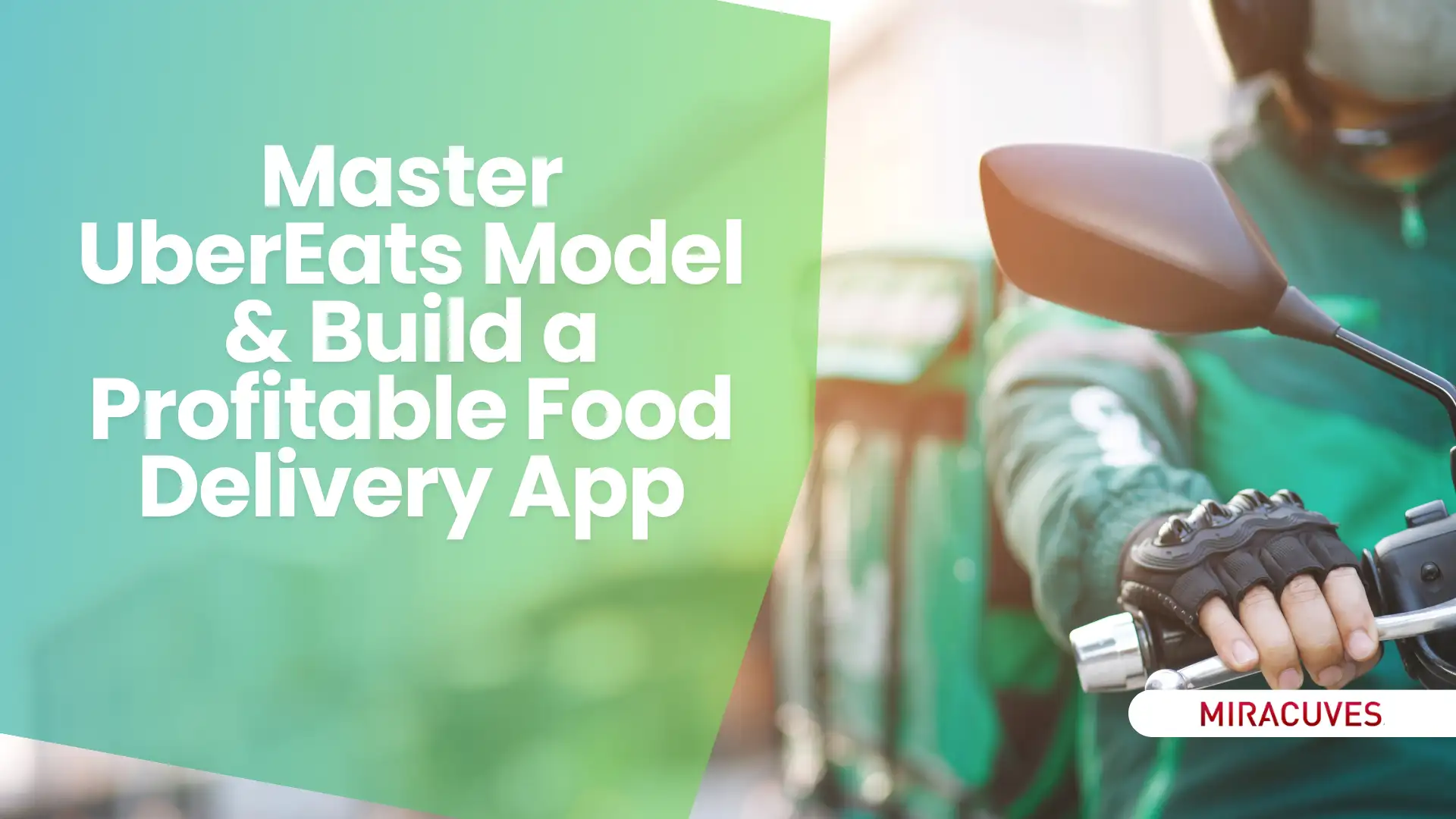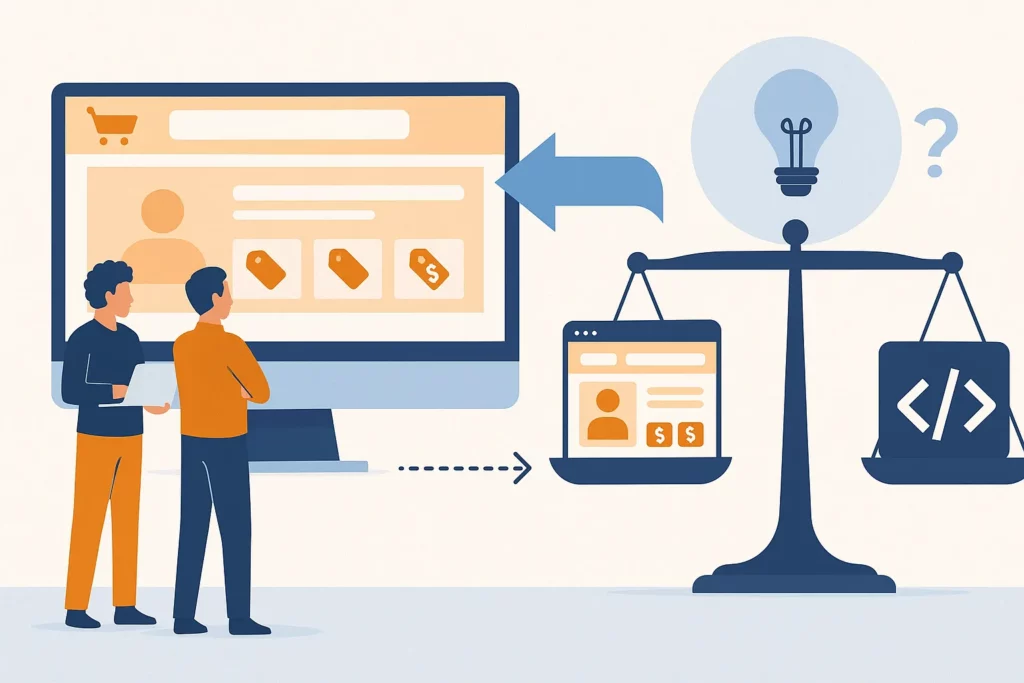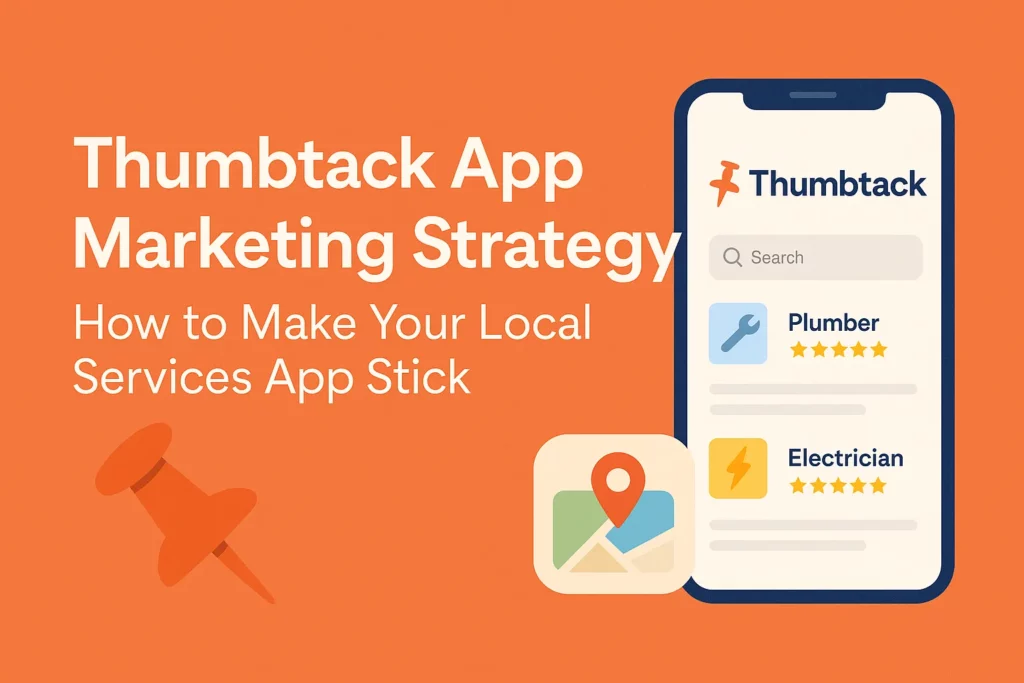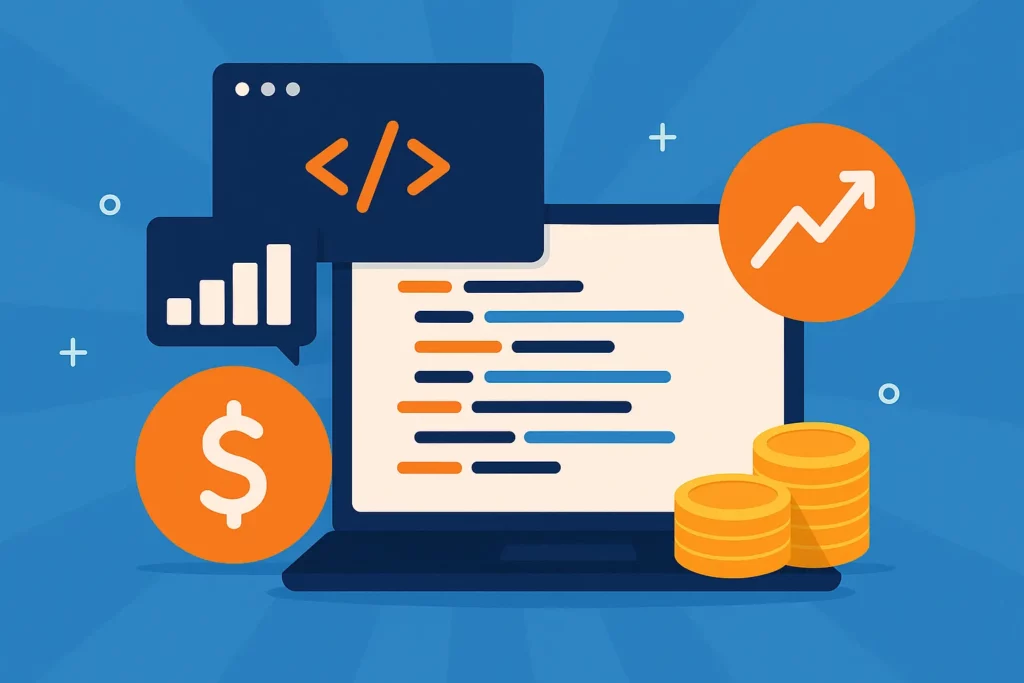As far as food delivery services go globally, UberEats seems to be the common name that most people think of, and it continues to be a market leader when it comes to expansion, efficiency, and profitability. The app itself has hardly been the sole reason for success; there is a rationally thought-out model as well, which binds the restaurants, consumers, and couriers in one place. For aspiring startups and enterprises that wish to have a similar success story, there is a need to comprehend the complexities of the UberEats approach in order to develop scalable and cutting edge solutions.
In this blog, we will explore how UberEats rises above the competition and goes the extra mile; other aspects would include its business structure, its areas of development, how the company makes money, and the indispensable elements of UberEats. If you are an entrepreneur keen to shake things in the business world, or a developer of technologies looking to create a technological masterpiece, this guide is for you.
Start your own food delivery business with ubereats clone.
At every step what we are going to evaluate here is the specific context, and not just how things work, which is what this paper does. Last but not the least, you will be able to create a robust basis for a food delivery business that keeps pace with, and even surpasses, the current cutthroat competition in the market.
Now the most exciting part of application: let’s see how it is possible to implement the UberEats business model and create a successful case.
Understanding The UberEats’s Model
How it works
UberEats used three-sided market as the model where customers, restaurants, and drivers were brought together in a perfect platform. Here’s how each stake holder adds to its achievement:
The Customers: They order food from different restaurants and track their orders online. This is to ensure that the customers have easy access to the assorted dishes, preferences, and secured payment options.
The Restaurants: Through a simple partnership restaurants get more customers, receive and process orders through one panel, and earn more without building delivery businesses.
Delivery partners: Orders are delivered by self-employed couriers using the most efficient route to deliver goods and get paid per delivery completed at their time.
Key value propositions
Ease of use for customers: The many options available, the order tracking features and the general flow are good and a high number of customers may return.
For the restaurants: They can reach out to many customers and also help in marketing their business
For the delivery partners: A good feature for gig workers the ability to work and the distance to be covered while delivering
Revenue Streams
Commissions: UberEats is paid by the restaurants with a certain percentage for each order.
Delivery Fees: The customers are charged depending on their distance from the restaurant, duration or size of the order.
Subscription plans: Some plans like UberEats Pass include food delivery without any charges and exclusive discounts.
Promoted Listings: With the app being popular, restaurants take it upon themselves to boost their sales with offerings that are seen on the app.
Scalability and Operational Efficiency
In terms of scalability, UberEats optimizes its system for growth and demand by using machine learning for demand prediction and AI solutions for the shortest delivery route. And, they don’t miss deliveries thanks to their powerful logistics system, which also keeps the customers happy.
With such a feature, UberEats has been able to expand its dominance in the food delivery sector and has encouraged many others to follow suit.
How to Build a Solution Like UberEats
Steps to Create a Food Ordering App
When one is to develop a solution similar to Uber Eats, a lot of careful thought should be invested in still about 5 steps which are important phases in the implementation of the solution:
1. Conducting Market Studies and Formulating the Business Strategy.
Decide on the specific consumer target i.e whether it’s business people in cities, students or families.
Evaluate competition in order to establish unmet market needs, thus articulating core differentiating factors of your product an Offering.
It could be a commission-based mode, subscription-based, or a mixed approach.
2. Most Critical Development Stages
Defining the Concept & Prototyping – Create wireframes for the graphical user interface and its elements. Make a proposal based on the ideas of your prospective users that you obtained.
Back End Development: Create databases that can be expanded to accommodate a large quantity of users and orders. Use high quality frameworks like Django or Node.js to ensure the system is efficient, secure and meets the requirements of users.
Frontend Development: Create an interactive UI/UX for mobile and web applications through technologies such as React Native or Flutter for Cross-Platform Approaches.
API Incorporation: Add payment sections, geolocation APIs and notification SMS or email services for increased utility of the app.
Testing: Ensure checks are done at usability level, performance level and security level. Any bugs or weaknesses are rectified before the service goes live.
3. Logistics and Partner Engagement
Provide cooperation with local restaurants and designate delivery staff.
Allow restaurants to customize menus and meal prices as well as receive orders via an online portal.
Introduce incentives to encourage delivery vendors to perform, such as performance bonuses.
Technology Stack for Development
Mobile App: Native apps will use Kotlin or Swift, hybrid apps will use Flutter.
Backend: Server-side applications will be developed in Node.js or Python.
Database: Users and order information will be stored in a MongoDB or PostgreSQL database.
APIs: Payment processing Stripe/PayPal API, real time location Google Maps API, communication regarding user Twilio.
Design and User Experience
Define user interaction flow by providing appropriate graphic interface structure combined with search options.
Unlike other fish, the application should be able to provide custom suggestions based on the user’s information and the number of items ordered by the user.
Provide usability recommendations to include users with disabilities who may require specific attention.
Compliance and Security
Inform users that the application must comply with the data privacy regulations in force in the respective countries, such as legislation regulations like GDPR or CCPA.
Apply encryption and tokenization in order to protect payment and personal information.
By following these steps, businesses will go ahead and establish a food delivery business that can compete with UberEats in terms of efficiency, and clientele expansion and has what it takes to stand out in the industry. Then, the only sin that Andy Roo – UberEats – committed was the appropriation of a core message that had little to do with pizazz, capturing the hearts of the masses against all odds.
Cost of Development for an Application Similar to UberEats
Analysis of Development Costs
| Component | Description | Estimated Cost (USD) |
|---|---|---|
| UI/UX Design | Creating a visually appealing and user-friendly UI | $8,000–$15,000 |
| Mobile App Development | Building native or hybrid apps | $20,000–$50,000 |
| Back-End Development | Scalable database and server infrastructure | $30,000–$60,000 |
| API Integration | Payment gateways, geolocation, notifications | $5,000–$10,000 |
| Testing & QA | Ensuring bug-free performance and security | $5,000–$10,000 |
| Maintenance | Ongoing updates and support | $5,000+/year |
An application like UberEats can be developed at different costs depending on the degree of complexity of features, technical aspects and geographic location of the development team. You have the following components explaining cost estimation.
A: UI/UX Design:
Creating a schema, designing a simple and user-friendly Interface can vary from $8,000–$15,000 according to its elaborateness.
B: Mobile Application Development:
Creating native apps for iOS and Android can fall between $25,000 – $50,000.
Native Development of a Hybrid app (using Flutter or React Native) tends to be cheaper and falls between $20,000 – $40,000.
C: Back-End Development:
Developing a comprehensive server-side network with support for user data, orders and other recent effects costs between $30,000 – $60,000.
D: Third-party API Incorporation:
Integrating APIs (payment, geo-location, and notifications) costs about $5000 – $10,000 on average.
E: Testing and Quality Control:
Systematic testing in order to identify bugs, performance, security will account for $5000 – $10,000.
F: Maintenance and Updating:
Maintenance, correct bugs and make feature changes and improvements may cost $5,000+ per year.
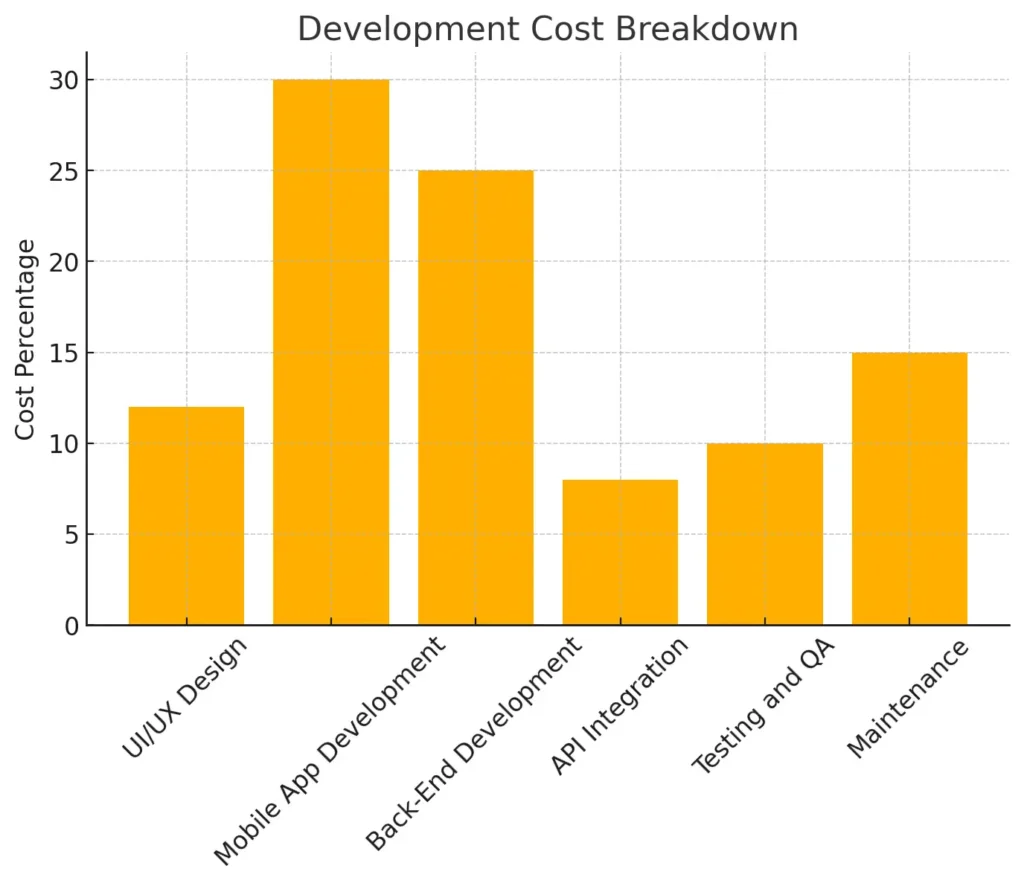
Factors Affecting the Cost of Development
Team’s Geographical Location:
For developers located in North American and Europe range between $50 – 150/hour while teams located in Asia range between $20 to $50/hour.
Feature Complexity:
The development costs tend to shoot through the roof with the implementation of advanced features like – artificial intelligence based recommendation systems, voice based ordering, and, support for multiple languages.
Time to Market:
Launching quicker than usual may come at an extra price which is certain to increase the allocation time and often the budget.
Estimated Total Cost
Minimum Viable Product (MVP): $40,000 – $60,000
Full scale app with all required features, $80,000 – $150, 000
It would be most appropriate for the businesses to try and cut down their base cost by limiting their focus onto the key features while upfront cost is to be kept low making plans for enhancing features as the application expands and targets variety of users.
Looking to integrate Uber-like features into your ride-sharing app?
Our expert team can help you develop advanced
functionalities such as real-time ride tracking, seamless
payments, and driver management.
Monetization Model for an UberEats Like Application
Revenue Channels for a Food Delivery Application.
| Revenue Stream | Description | Percentage Contribution (%) |
|---|---|---|
| Commissions | Percentage from restaurant earnings per order | 40% |
| Delivery Fees | Charges for delivery based on distance, time, and demand | 30% |
| Subscription Plans | Monthly or annual plans offering free deliveries and exclusive benefits | 15% |
| Sponsored Listings | Restaurants pay to appear at the top of search results | 10% |
| In-App Advertising | Restaurants or local businesses pay for banner ads | 5% |
Commission Model
This is a model in which the partner restaurants are charged a certain percentage of the order for every order received through the company’s platform.
It is a commission based earnings on such orders that is common and one of the primary revenue sources and, that usually ranges from 15-30 percent of each order.
Delivery Charges
In this situation, great amounts of money are included in the delivery cost. In other words, customers pay in line to distance, time, and demand what is considered appropriate.
A good example is surge pricing that may occur during busy hours or when it is bad whether in which case the revenue stream can increase significantly.
Subscription Plans:
In this case however, customers are able to purchase plans such as “Unlimited Free Deliveries” or other forms of special plans that provide discounts for a certain period – be it monthly or yearly.
These are examples such as UberEats Pass or similar subscription models which not only provides benefits to the customers but ensure that there is constant income to the organization.
Sponsored Listings
Also, restaurant operators use money to boost such sales by placing their establishments ahead in search results, thus increasing the chances that potential customers will notice them and make purchases.
These advertisements are the components of the platform that ensures that it provides a stable cash flow over time.
In-App Advertising For
Any users can use the services of digital banner advertising or run special offers on the website pages of the restaurants and the local businesses.
Partnerships And Promotions
The advertising revenue and profit in some cases share by collaborating with food brands and promoting co-branded events with the app.

Emerging Trends in Monetization
Cloud Kitchens
We make deals with delivery only kitchens.
Lower office expenses for the kitchens means higher app margins.
Dynamic Pricing Strategies
Pricing based on algorithms is made depending on order and customer volume, along with the availability of delivery partners.
Upselling And Cross-selling
Increase cart value by suggesting side dishes, drinks, or desserts while placing an order, so the salads before the main courses, not after.
Optimizing Monetization for Scalability
Allow loyal members to attempt and place repeat orders by firstly, introducing latitude programs that gives arrhythmias discounts.
Provide markets with flexible price packages that accommodate local conditions and user expectations.
Broaden earning opportunities by including more services like grocery delivery or pharmacy delivery in a future.
The idea is simple: a monetization scheme that is cost effective and convenient for the users are met with optimization of revenue streams to promote sustainability in the long term.
Key Features of An UberEats Like App
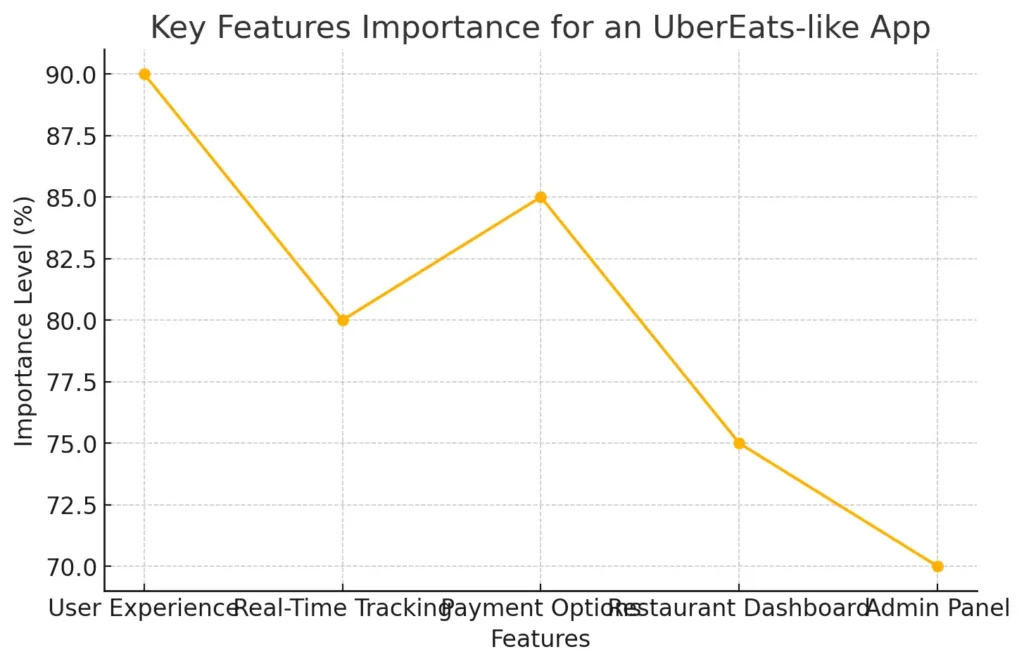
Essential Features For Users
Seamless Registration And Login
People can easily create an account with email, phone or social networking websites to sign up.
Smart Search And Filters
Searching between cuisines and sorting results by the type of the cuisine, ratings, and the price range should be made easier with an improved built in search feature that comes with pertinent filters.
Real-Time Order Tracking
Allows customers to feel trust through tracking delivery status in the area using GPS.
Multiple Payment Options
Easy integration with credit cards, wallets, UPI, and net banking.
Order History and Reordering
Enabling the viewer to see the orders they have made in the past and order again with a single touch.
Features for Restaurants
Restaurant Dashboard
Order processing, menu modification, price modification, and sales data analysis can be carried out on the restaurant dashboard.
Order Notifications
New orders are automatically flagged and ordered to assist the kitchen with handling its business.
Sales Analytics
Daily and monthly revenue, number of sold meals, and order cycles are analyzed.
Features for Delivery Partners
Delivery Partner App
Simple application interface showing order information, optimized routing and tracking of income.
Earnings Tracker
A feature embedded in this application that enables one to view daily and weekly earnings and payment history.
Availability Settings
Delivery partners will be able to switch on or off the interface to indicate availability.
Admin Panel Features
Comprehensive Order Management
Supervision of orders and their allocation across the platform is required to avoid chaos.
Analytics and Reporting
A comprehensive report on falls on the duration of transactions: duration on the platform, activity of users, income generation, etc.
Fraud Detection and Security
An application designed to assist in monitoring and minimizing fraud and maximise the number of secure transactions.
Advanced Features to Stand Out
AI-Powered Recommendations
System recommendations made for consumers based on previously ordered items and likes.
Integrating Voice Search
Enable the users to search for either a restaurant or a certain type of dish using voice commands.
Eco-Friendly Payment & Delivery
Help track green house emissions and provide alternatives for delivery for green users of the app.
| Feature | Stakeholder | Description |
|---|---|---|
| Real-Time Order Tracking | User | Live GPS tracking of deliveries |
| Restaurant Dashboard | Restaurant | Manage orders, menus, and analytics |
| Earnings Tracker | Delivery Partner | Monitor daily and weekly earnings |
| Admin Panel | Admin | Order management, analytics, and fraud detection |
| AI-Powered Recommendations | User | Suggest personalized options based on past preferences |
By integrating these features, businesses make it possible to make the customer and other parties’ interaction with the platform easy, authentic, and safe which enables customers to build trust and increase the number of customers on the platform.
Conclusion
Building an app similar to UberEats is about both technological support and understanding the market, users, and processes. UberEats has proven its worth as a reputable on-demand food delivery app creating good business around even markets that are new to the industry.
It is clear that to grab a significant market share, there is need to integrate key features, reduce the application development cost, and make use of technologies that are scalable. The business monetization model should complement the features of the application while directing the focus on the users and the shipping management process.
The quest to building an outstanding food delivery app starts by having a sound idea, having an effective strategy, where all the parties are able to derive value from them. Clearly, with a solid strategy and implementation, your platform can be on par with UberEats in terms of success and further push the boundaries of the industry into new markets.
Do you want to build the next popular mobile app for food delivery? The opportunities are limitless.
With Miracuves, whatever your imagination is, can be brought into the world. Our proficient team is capable of developing advanced, multifunctional, and creative solutions that are appropriate for your business. Besides, bringing rich experience in providing high-quality IT solutions in short terms, we help businesses to be competitive. If you want to create something similar to UberEats or need support in building a custom on-demand application, Miracuves has all you might need to comply projects on ideas on time and turn them into successful products.
Please, try our design template of an UberEats business model for a sound and comprehensive plan. This guide contains all important things including what viable propositions need to be made and what is to be the cost structure to equip the platform intending to expand into the on-demand space successfully. Act in like manner now and maintain business leadership!
Curious about how UberEats generates revenue?
We can help you develop a profitable food delivery business model with features like delivery commissions, partner restaurant management, and subscription options.
FAQs
What are the revenue generation sources for the UberEats business model?
UberEats is paid by restaurants for connecting them with clients, receives delivery fees, and is also involved in promotion activities like UberEats Pass, which charges customers a premium subscription fee in exchange for delivery free opportunities, amongst other things.
What are the importa features of an application similar to Uber Eats?
Real-time order updates, numerous payment systems, restaurant tools, delivery star apps, and a management system have all been identified as critical factors.
What is the fee charged by an app similar to UberEats?
Depending on the features required, technologies employed, and the location of the developer company. The range can be anything between $40,000 to $150,000.
What are the typical programming languages used to create a food ordering app like UberEats?
A combination of technologies is often employed such as Flutter or React Native for the front-end interface, Node.js or Django for the back end, and a database that can be MongoDB or PostgreSQL.
If a new app is made, how long does it take in the market to build it from the scratch like UberEats?
In most cases 4-6 months would be sufficient to create a minimum viable product. However, a comprehensive application can be developed over a year.
How can a startup establish its presence in the industry amid giants like UberEats doing rounds on every street?
By specializing in a particular segment by providing services such as green delivery, AI assist filled delivery, and above all hassle free customer service.
What are the revenue generation sources for the UberEats business model?
UberEats is paid by restaurants for connecting them with clients, receives delivery fees, and is also involved in promotion activities like UberEats Pass, which charges customers a premium subscription fee in exchange for delivery free opportunities, amongst other things.
What are the importa features of an application similar to Uber Eats?
By specializing in a particular segment by providing services such as green delivery, AI assist filled delivery, and above all hassle free customer service.
Check out the top-rated Food delivery solutions offered by Miracuves – built for performance and scale:
- Postmates Clone Solution – Imagine one powerful platform that lets you book a stay, order your favorite meals, hail a ride, pay bills, and much more — all in a single app.
- Zomato Clone Solution – A powerful all-in-one platform for discovering top restaurants, ordering food online, reading reviews, and exploring cuisines.



